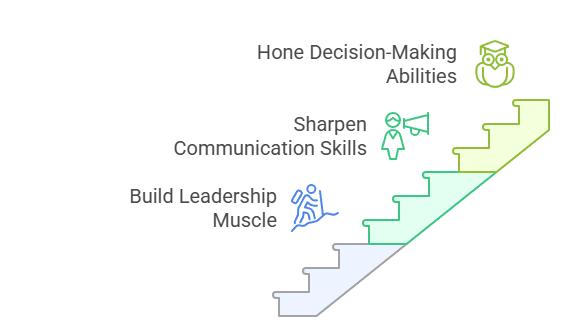Hey there, fellow tech enthusiast. Ever stare at your code late into the night and wonder, “What’s next? Could I rally a team to build something epic instead of just writing it solo?” If that hits home, you’re in the right spot. The engineering manager role isn’t just a promotion; it’s a game-changer. It lets you shape products, mentor rising stars, and steer the ship through stormy deadlines. But getting there? That’s where a solid engineering manager roadmap comes in.
Picture this: The demand for engineering managers is skyrocketing. In the U.S., these pros pull in a median salary of $167,740 annually, with top earners hitting $223,000 or more. And with tech evolving faster than ever, companies crave leaders who blend code smarts with people power. This guide lays out an engineering manager roadmap packed with actionable steps, real-talk tips, and stories from the trenches. Whether you’re knee-deep in software engineering career progression or just dipping your toes into tech leadership development, we’ll map it out together. Let’s turn that “what if” into “watch me.”
Table of Contents
What Does an Engineering Manager Actually Do?
Before diving into the how-to, let’s get real about the day-to-day. An engineering manager isn’t buried in bugs anymore; they’re the glue holding tech teams together. Think orchestrating projects, coaching devs through tough spots, and aligning code with business goals.
Core duties? Planning sprints, budgeting for tools, and fostering a vibe where ideas flow freely. You’re the bridge between engineers and execs, translating “We need scalable APIs” into “This delivers ROI by Q3.” It’s less about being the smartest coder and more about empowering others to shine.
Core duties? Planning sprints, budgeting for tools, and fostering a vibe where ideas flow freely. You’re the bridge between engineers and execs, translating “We need scalable APIs” into “This delivers ROI by Q3.” It’s less about being the smartest coder and more about empowering others to shine.
If you’re nodding along, great. If not, no sweat, plenty of paths in tech. But for those ready to level up, let’s chart the course.
Why Bother with an Engineering Manager Roadmap?
You could wing it, right? Grind through promotions and figure out management on the fly. But here’s the truth: Without a plan, you risk burnout or stalling out. An engineering manager roadmap gives you clarity—like a GPS for your software engineering career progression.
Benefits stack up quick. First, it boosts confidence. Knowing the steps to become an engineering manager demystifies the leap from individual contributor to team lead. Second, it sharpens focus. Instead of chasing every certification, you target what moves the needle, like honing engineering management skills in communication and strategy.
Data shows structured paths pay off. Engineers who follow deliberate tech leadership development plans advance 30% faster. Plus, in a field where 40% of new managers flop in their first year due to skill gaps, a roadmap arms you with the tools to thrive. It’s your secret weapon for not just surviving, but owning the role. Ready to plot your points?
Step 1: Solidify Your Technical Foundation
No engineering manager roadmap skips the basics; you gotta walk the talk. If you’re coming from dev work, lean on that. But even seniors need to stay sharp as tech shifts.
Start by auditing your stack. Are you fluent in cloud services like AWS or Azure? Comfortable with CI/CD pipelines? These aren’t optional; they’re your credibility card. Dive into hands-on projects, maybe refactor a legacy app, or experiment with microservices. Tools like GitHub Actions or Docker keep you current.
Pro tip: Dedicate 5 hours a week to learning. Platforms like Coursera offer bite-sized modules on modern architectures. Why bother? Because when you guide a junior through a Kubernetes deploy, your street cred skyrockets.
Step 2: Master Essential Engineering Management Skills
Tech chops get you in the door, but engineering management skills keep you there. This is where the magic happens, or fizzles. Focus on three pillars: leadership, communication, and decision-making.

Building Leadership Muscle:
Leadership isn’t bossing people around; it’s inspiring them to crush goals. Start small: Volunteer to lead a cross-team hackathon. Learn to delegate without micromanaging, trust your crew, but check in with empathy.
Stats highlight the payoff: Teams with empathetic leaders see 20% higher retention. Practice by setting one-on-ones where you listen more than talk. Ask, “What’s blocking you?” instead of “Why the delay?”
Sharpening Communication:
Ever seen a project tank because of murky specs? Yeah, me too. Clear comms are non-negotiable. Hone this by writing crisp standup updates or presenting roadmaps to non-tech folks.
Tip: Use the “elevator pitch” drill, explain your project’s value in 30 seconds. Tools like Slack threads or Loom videos make it stick. In surveys, 85% of managers say poor communication is their biggest hurdle.
Honing Decision-Making:
Choices define you. Weigh options with frameworks like the Eisenhower Matrix, urgent vs. important. Simulate scenarios: “If we cut this feature, what’s the ripple?”
These skills weave through your engineering manager’s roadmap, turning “good enough” into game-changing.
Step 3: Rack Up Hands-On Leadership Experience
Theory’s cute, but experience seals the deal. You don’t need a title to lead; start now.
Grab side gigs: Mentor a newbie via internal programs or co-lead an open-source contribution. At work, propose a process tweak, like agile retros. Track wins: “Led migration that shaved 15% off deploy times.”
Case in point: Mike, a backend dev, shadowed his manager on hiring interviews. Six months later, he was tapped for a tech lead role. It’s about proving you can multiply efforts, not just add yours.
Aim for 1-2 leadership stints per quarter. This builds your resume and eases the steps to becoming an engineering manager. Remember, 60% of promotions come from demonstrated impact, not just tenure.
Step 4: Network and Find Your Mentor
Solo grinding works for code, not careers. Tech leadership development thrives on connections.
Hit up LinkedIn, message alums, or join groups like “Engineering Managers Network.” Attend meetups; share war stories over coffee. A mentor? Gold. Seek someone two levels up who’s been there.
How? “Hey, loved your post on scaling teams, any advice for aspiring managers?” One chat can unlock intros. Networks boost job odds by 50%.
In our engineering manager roadmap, this step is your accelerator. Don’t hoard knowledge, share it.
Step 5: Conquer Project Management
Projects are the heartbeat of engineering. Master this, and you’re indispensable.
Learn the ropes: Agile, Scrum, Kanban. Tools? Jira for tracking, Trello for visuals. Set SMART goals: Specific, Measurable, Achievable, Relevant, Time-bound.
Risk management: Spot bottlenecks early with Gantt charts. Budgeting? Factor in dev hours plus buffers. A study found PM-savvy managers deliver 28% more on time.
Actionable: Run a mock project, plan an app build end-to-end. This hones your engineering management skills for real stakes.
Step 6: Commit to Continuous Learning and Certifications
Tech waits for no one, and neither does management. Carve out time for growth.
Certifications like PMP or Certified ScrumMaster validate you. Online? Google’s Project Management cert or edX’s leadership courses.
Read “The Making of a Manager” by Julie Zhuo; it’s a bible for newbies. Track progress: Quarterly reviews on new skills acquired.
Why? Lifelong learners advance quickly; 90% of top managers credit ongoing education. Slot this into your engineering manager’s roadmap for sustained momentum.
Step 7: Make the Transition and Tackle Challenges
The leap’s scary, imposter syndrome hits hard. Combat it by journaling wins and seeking feedback.
Common pitfalls? Over-focusing on tech over people. Shift: Prioritize team health metrics like morale surveys.
Budget for failure: First quarter might wobble, but iterate. Resources like manager communities help.
Transition tip: Shadow a peer manager. Data shows prepared switchers succeed 40% more. You’re not starting over, you’re evolving.
Step 8: Scale Up and Innovate
You’ve got the basics; now lead big. Craft team roadmaps aligning tech with biz vision. Foster innovation, dedicate “hack days” for wild ideas.
Measure success: OKRs for outcomes, not outputs. As you climb, eye director roles. This caps your engineering manager’s roadmap, prepping for VP or CTO.
5 Actionable Tips to Accelerate Your Path
- Daily Reflection: End days, noting one leadership win. Builds momentum.
- Feedback Loops: Monthly 360 reviews, brutal honesty fuels growth.
- Tool Mastery: Pick three PM tools; rotate quarterly.
- Wellness Check: Management Drains Schedule Unplug Time.
- Celebrate Milestones: Hit a step? Treat the team to virtual trivia.
These nuggets, rooted in engineering management skills, keep you agile.
FAQs
How long does it take to become an engineering manager with no prior leadership experience?
It varies, but expect 3-5 years if you’re proactive. Focus on building tech leadership development through projects and mentorship. Many hit it in two years with aggressive upskilling, per industry reports.
What are the top engineering management skills employers seek in 2025?
Communication tops the list, followed by strategic planning and emotional intelligence. Surveys show 75% prioritize soft skills over pure tech prowess for hires.
Can I transition to engineering manager from a non-software engineering career progression?
Absolutely, civil or mechanical backgrounds transfer well. Emphasize transferable skills like project oversight. Tailor your resume to highlight team impacts.
How do I handle imposter syndrome during my engineering manager roadmap?
Normalize it, 80% of new managers feel it. Counter with evidence: Log achievements and seek affirming feedback. Therapy or coaching apps like BetterUp help too.
What's the biggest mistake to avoid when pursuing tech leadership development?
Micromanaging. Empower your team; your job’s outcomes, not oversight. Teams micromanaged report 50% lower engagement.
There you have it, your blueprint to crush the engineering manager roadmap. It’s not a sprint; it’s a marathon with epic views. Start with one step today, and watch your software engineering career progression unfold. What’s your first move? Drop it in the comments, I’d love to cheer you on. Let’s build the future, together.
























